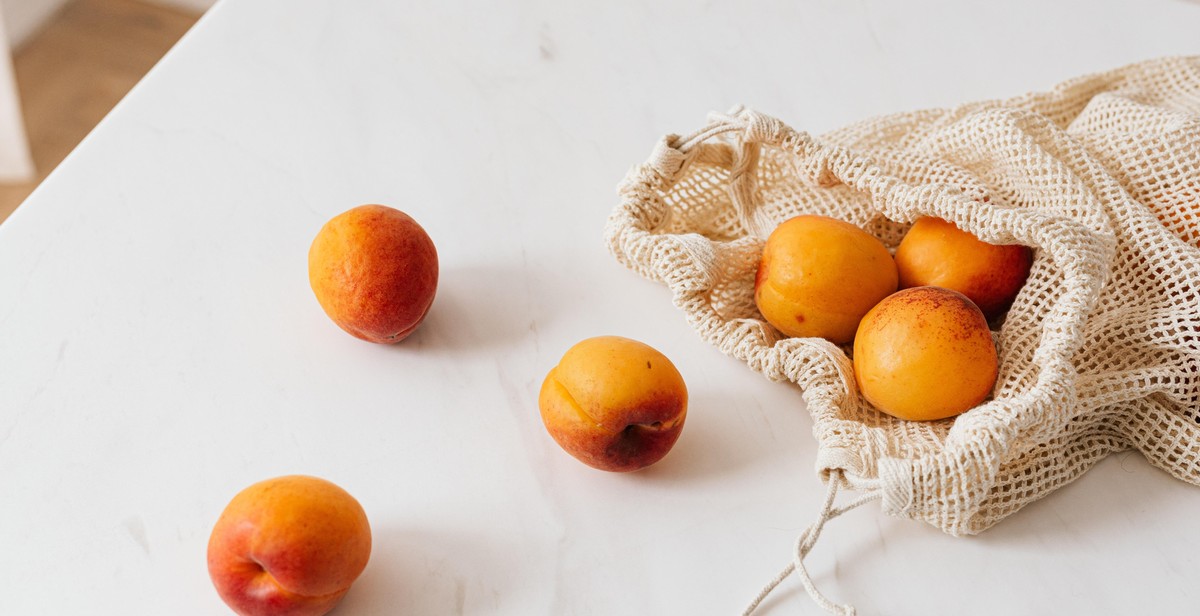Introduction
Fruit vinegar is a delicious and healthy alternative to regular vinegar that can add a burst of flavor to any dish. Made from fermented fruit juice, fruit vinegar is a versatile ingredient that can be used in a variety of recipes, from marinades and salad dressings to desserts and cocktails.
Homemade infused vinegars are becoming increasingly popular among food enthusiasts, as they offer a unique flavor and can be customized to suit individual tastes. Making fruit vinegar at home is a simple and cost-effective way to create a delicious and healthy ingredient that can elevate any dish.
What is Fruit Vinegar?
Fruit vinegar is a type of vinegar that is made by fermenting fruit juice. It is similar to other types of vinegar, such as apple cider vinegar and rice vinegar, but has a sweeter and fruitier flavor. The fermentation process involves converting the natural sugars in the fruit juice into alcohol, which is then converted into acetic acid by bacteria. This process gives fruit vinegar its characteristic tangy flavor and acidic taste.
Fruit vinegar can be made from a wide variety of fruits, including berries, citrus fruits, and tropical fruits. Each type of fruit vinegar has its own unique flavor and can be used in a variety of dishes.
Why Make Homemade Infused Vinegars?
Making homemade infused vinegars allows you to customize the flavor to your liking and experiment with different fruits and herbs. It is also a great way to use up any excess fruit you may have on hand. Store-bought fruit vinegars can be expensive and may contain additives and preservatives. Homemade infused vinegars are a healthier and more cost-effective alternative.
With a little bit of patience and creativity, you can make your own delicious fruit vinegar at home. In the following sections, we will explore the steps involved in making fruit vinegar and some delicious recipes to try.

Why Make Fruit Vinegar?
Fruit vinegar is a versatile ingredient that can add a unique flavor to a variety of dishes. It is made by fermenting fruit juice and turning it into vinegar. Making fruit vinegar at home is not only easy but also has several benefits.
Health Benefits of Fruit Vinegar
Fruit vinegar has several health benefits that make it a popular choice for health-conscious individuals. It contains acetic acid, which has been shown to have several health benefits, including:
- Lowering blood sugar levels
- Reducing inflammation
- Improving digestion
- Boosting weight loss
Additionally, fruit vinegar is rich in antioxidants, which help to protect the body from free radical damage and reduce the risk of chronic diseases.
Cost Savings Compared to Store-Bought Vinegar
Making fruit vinegar at home is also a cost-effective alternative to buying it from the store. Store-bought fruit vinegar can be expensive, and you may not always find the flavor you are looking for. By making your own fruit vinegar, you can customize the flavor to your liking and save money in the process.
Furthermore, making fruit vinegar at home is a great way to use up leftover fruit that may otherwise go to waste. This not only helps to reduce food waste but also saves you money by using ingredients that you already have on hand.
| Benefits of Making Fruit Vinegar at Home |
|---|
| Customize the flavor to your liking |
| Save money compared to store-bought vinegar |
| Reduce food waste |
In conclusion, making fruit vinegar at home is a great way to add a unique flavor to your dishes, while also reaping the health benefits and cost savings. By following our simple guide, you can easily make your own fruit vinegar and start enjoying its many benefits.

Choosing the Right Fruits
When it comes to making homemade infused vinegars, selecting the right fruits is crucial. The quality and ripeness of the fruits you choose will greatly affect the flavor and potency of your vinegar. Here are some tips for choosing the right fruits:
Selecting Ripe Fruits
When selecting fruits for your infused vinegar, it is important to choose ripe fruits that are at the peak of their flavor. Ripe fruits are sweeter and more flavorful, which will make for a more delicious vinegar. You can tell if a fruit is ripe by its color and texture. For example, a ripe peach will be soft to the touch and have a deep, golden color.
It is also important to choose fruits that are free from bruises, blemishes, and mold. These imperfections can affect the flavor and quality of your vinegar. Always inspect your fruits carefully before using them in your vinegar.
Best Fruits for Infused Vinegars
While you can make infused vinegars with a variety of fruits, some fruits work better than others. Here are some of the best fruits for making infused vinegars:
| Fruit | Flavor Profile |
|---|---|
| Berries (strawberries, raspberries, blueberries, blackberries) | Sweet and tart |
| Stone fruits (peaches, plums, cherries) | Sweet and floral |
| Citrus fruits (lemons, limes, oranges, grapefruits) | Tart and acidic |
| Apples | Sweet and tangy |
Keep in mind that you can also combine different fruits to create unique flavor combinations in your vinegar. For example, you might try combining strawberries and basil for a sweet and herbaceous vinegar.
By choosing ripe, high-quality fruits and selecting the best fruits for infused vinegars, you can create delicious and flavorful vinegars that will add a unique touch to your culinary creations.

Preparing the Fruit
Fruit vinegar is a delicious and healthy condiment that can be used to enhance the flavor of a variety of dishes. The first step in making fruit vinegar is to prepare the fruit. The following steps will guide you through the process of washing and cutting the fruit.
Washing the Fruit
The first step in preparing the fruit for vinegar is to wash it thoroughly. This will help to remove any dirt, debris, or pesticides that may be present on the surface of the fruit. To wash the fruit, follow these steps:
- Fill a bowl with cool water.
- Add the fruit to the bowl.
- Gently agitate the fruit in the water to remove any dirt or debris.
- Remove the fruit from the water and rinse it thoroughly under running water.
- Gently pat the fruit dry with a clean towel.
Cutting the Fruit
Once the fruit has been washed and dried, it’s time to cut it into small pieces. This will help to release the flavor and aroma of the fruit into the vinegar. The size and shape of the fruit pieces will depend on your personal preference, but it’s important to make sure that the pieces are small enough to fit into the jar or container that you will use to make the vinegar. To cut the fruit, follow these steps:
- Remove any stems, leaves, or other non-edible parts from the fruit.
- Cut the fruit into small pieces using a sharp knife or kitchen scissors.
- Make sure that the fruit pieces are all roughly the same size.
- Place the fruit pieces into the jar or container that you will use to make the vinegar.
Once you have prepared the fruit, you are ready to move on to the next step in the process of making fruit vinegar. In the next section, we will discuss how to infuse the fruit with vinegar to create a delicious and flavorful condiment.

Making the Vinegar
After gathering all the necessary equipment, it’s time to start making your fruit vinegar. Here are the steps:
Equipment Needed
You will need the following equipment:
- Glass jar with a wide mouth and a tight-fitting lid
- Cheesecloth or coffee filter
- Rubber band
- Non-reactive saucepan
- Funnel
- Bottle with a tight-fitting lid for storing the finished vinegar
Creating the Vinegar Base
The first step in making fruit vinegar is to create the vinegar base. To do this, you will need to combine water and sugar in a non-reactive saucepan and heat it until the sugar dissolves. Once the sugar has dissolved, remove the pan from heat and let the mixture cool to room temperature. Once the mixture has cooled, add the vinegar and stir to combine. Pour the mixture into a glass jar with a wide mouth and a tight-fitting lid. Cover the jar with cheesecloth or a coffee filter and secure it with a rubber band. Store the jar in a dark, cool place for about 2 weeks, stirring it every few days.
Adding the Fruit
After 2 weeks, it’s time to add the fruit. Choose your favorite fruit and wash it thoroughly. Cut the fruit into small pieces and add it to the vinegar base. Cover the jar again with cheesecloth or a coffee filter and secure it with a rubber band. Store the jar in a dark, cool place for another 2 weeks, stirring it every few days.
Storing the Vinegar
After 2 weeks, strain the vinegar through a cheesecloth or coffee filter and funnel it into a clean bottle with a tight-fitting lid. Store the bottle in a cool, dark place until you’re ready to use the vinegar. The vinegar will continue to develop flavor over time, so feel free to taste it periodically to see how the flavor is developing.
| Steps | Equipment Needed |
|---|---|
| Creating the Vinegar Base | Non-reactive saucepan, funnel, glass jar with a wide mouth and a tight-fitting lid, rubber band, cheesecloth or coffee filter, bottle with a tight-fitting lid for storing the finished vinegar |
| Adding the Fruit | Glass jar with a wide mouth and a tight-fitting lid, rubber band, cheesecloth or coffee filter, funnel, bottle with a tight-fitting lid for storing the finished vinegar |
| Storing the Vinegar | Cheesecloth or coffee filter, funnel, clean bottle with a tight-fitting lid for storing the finished vinegar |

Using Fruit Vinegar in Cooking
Fruit vinegar is a versatile ingredient that can be used in a variety of dishes to add a tangy and fruity flavor. Here are some ways to use fruit vinegar in your cooking:
Marinades and Salad Dressings
Fruit vinegar can be used as a base for marinades and salad dressings. Mix it with olive oil, herbs, and spices to create a delicious dressing for salads. You can also use fruit vinegar as a marinade for meats, poultry, and fish. The acidity of the vinegar helps to tenderize the meat while adding flavor.
Baking and Desserts
Fruit vinegar can be used in baking to add a tangy flavor to cakes, cookies, and other desserts. It can also be used to make fruit syrups and glazes for cakes and pastries. Try adding a splash of fruit vinegar to your next batch of muffins or cupcakes for a unique flavor twist.
Sauces and Glazes
Fruit vinegar can be used to add flavor to sauces and glazes. Use it to make a tangy barbecue sauce or a sweet and sour glaze for meats. You can also use fruit vinegar to deglaze a pan and create a flavorful sauce to serve with your meal.
| Fruit Vinegar | Best Uses |
|---|---|
| Apple Cider Vinegar | Marinades, salad dressings, sauces |
| Raspberry Vinegar | Salad dressings, desserts, glazes |
| Blueberry Vinegar | Sauces, marinades, salad dressings |
| Pomegranate Vinegar | Salad dressings, sauces, marinades |
Experiment with different fruit vinegars in your cooking to discover new and exciting flavor combinations. With its versatility and unique flavor, fruit vinegar is a must-have ingredient in any kitchen.
